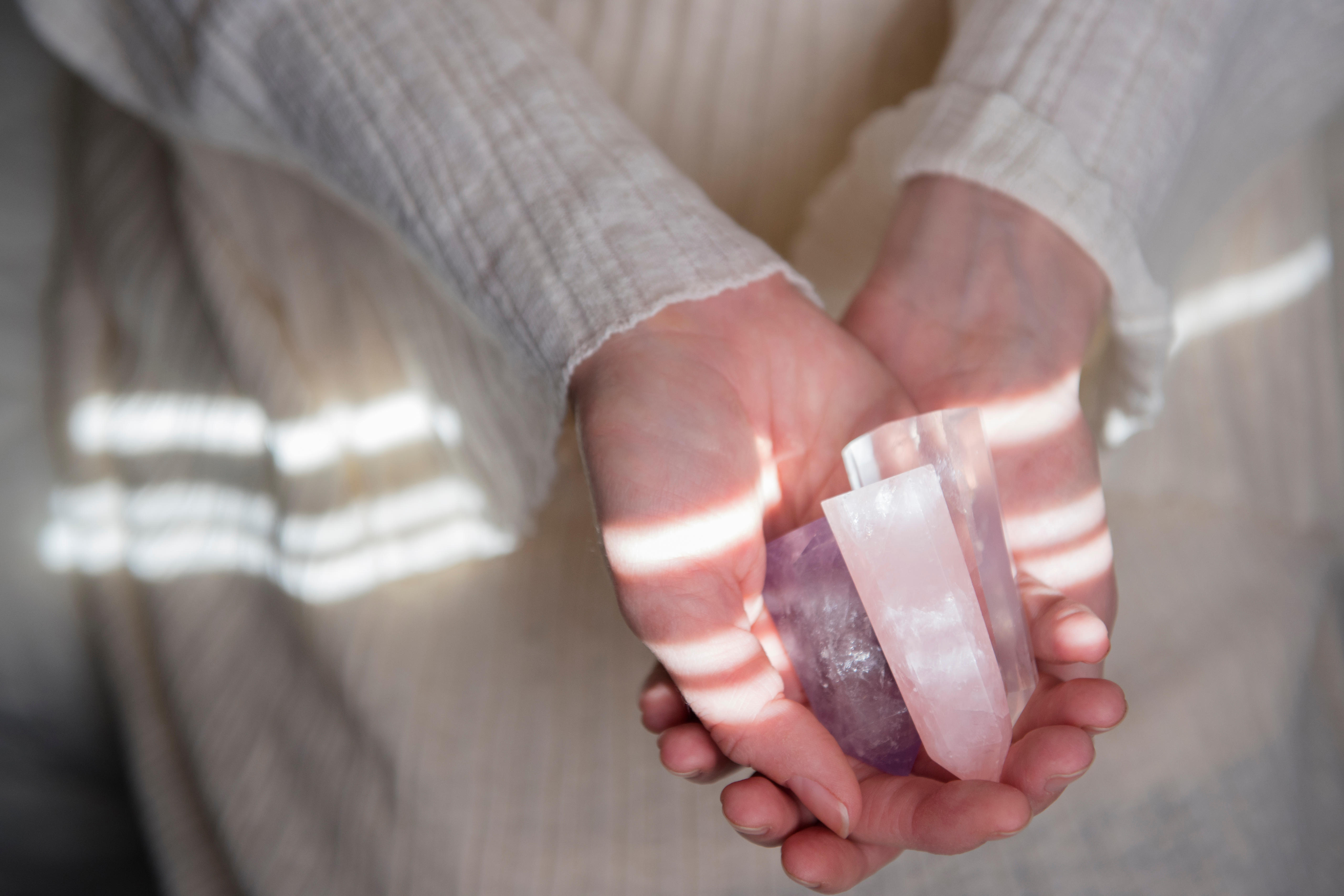The profound sadness of crystal therapy
Pity the magic rock devotees


I am staring at one of the most bizarre and complicated charts you are ever likely to see outside the pages of a late-medieval alchemy manual. Fourteen rows of named colors are divided upon into four columns: "Energy," "Effect," "Chakra," and "Stone." To me, it reads like something out of the Official Advanced Dungeons & Dragons Dungeon Master's Guide. But for some people, this is a highly serious, indeed a quasi-religious document.
According to The New York Times, belief in the mystical healing properties of crystals is now "practically as common as drinking green juice and practicing yoga." The fact that I have no idea what "green juice" is and am not acquainted with a single practitioner of yoga gives you a sense of how cut off some of us are from the interests and habits of wealthy educated Americans in major metropolitan areas.
The basic idea for adherents of crystal therapy — "wellness" instructors, restaurant publicists, luxury nail salon entrepreneurs, someone called Adele — is that if you want to bring about a given effect, you need to harness the magical color energy sleeping inside old bits of rock. How exactly you go about doing this is largely a question of taste and convenience and, let's face it, means. Do you want to bathe in amber water or just clutch a piece of onyx while you meditate? Are you down for burning some sage and brandishing your celestite amid the griseous fumes? Can you afford enough gold to fix your solar plexus?
The Week
Escape your echo chamber. Get the facts behind the news, plus analysis from multiple perspectives.

Sign up for The Week's Free Newsletters
From our morning news briefing to a weekly Good News Newsletter, get the best of The Week delivered directly to your inbox.
From our morning news briefing to a weekly Good News Newsletter, get the best of The Week delivered directly to your inbox.
But it all comes down to the same thing: using commercially shaped aggregates of mineral or mineraloid compounds to influence your mood and health and, who knows, maybe even your destiny.
I wonder what it must be like to believe that sucking water through a filter made of peridot will boost something called my heart chakra and bring me the gift of spontaneity simply because it is light green or that wearing rose quartz will confer special benefits upon my cardiovascular system, to say nothing of winning me "unconditional love" from my family and peers. What a wonderful world it would be if arranging different colored rocks in a geometric pattern on a homemade "altar" would allow me to harness the combined power of — say — labradorite (change), amethyst (insight), and topaz (mental alertness) in a single devastatingly potent burst of life-enhancement.
It's easy to mock the pretensions of crystal enthusiasts. (In the course of writing this column I have backspaced over dozens of jokes about Jim Henson and Final Fantasy and William Blake and The Doors and Hyde Park and techno and designer drugs.) Certainly the political economy of the magic-rock industry is not above criticism on moral and ethical grounds, though a part of me, mindful of the old saw about the not exactly indissoluble bond between a fool and his or her money, is inclined to shrug off concerns about (mostly, comparatively) rich people being exploited.
But I don't think crystal therapy is amusing or especially sinister, though I would not willingly go within a mile of a shop that catered to it or any other occult practice. I would prefer to say that it's pathetic — in the older sense of the word, neglected by our cruel age, meaning not risible or absurdly inadequate but "arousing pity, especially through vulnerability or sadness."
A free daily email with the biggest news stories of the day – and the best features from TheWeek.com
Because let's face it: There is something profoundly sad about people so cut off from the frightening — but also more than occasionally achingly beautiful — reality of what it means to be human that they manage to convince themselves that a little piece of fossilized tree sap can help them have better relationships or just feel calmer.
It's not surprising that adherents of crystal therapy seem to be predominantly coastal and in demanding jobs in high-stress industries like fashion and show business. Material Girl, Mystical World: The Now Age Guide to a High-Vibe Life, Ruby Warrington's recent crystal therapy memoir, is full of passages that almost brought me to tears. Most of these addressed what it's like to live in a world where you have no family and are busy trying to work very hard in a spiritually unedifying business while living in "a $4K-a-month shoebox infested with roaches and vermin" and going on "an endless round of blind 'friend dates' with similarly rootless people" and trying really hard not to hate yourself.
This is a milieu that is totally alien to me. I have never felt overly pressured at work or worn out caring about my appearance or exhausted from trying to impress people. My bosses have been almost uniformly nice people; some former ones are great friends. When I am feeling anxious or sad, I usually just listen to music or have a beer or ask my 2-year-old for a hug. I also pray a lot. But for complicated personal and historical reasons this is not something that occurs to most 20-somethings working for tech startups. For Warrington, taking an evening off to giggle and soak up non-existent rock energy is what makes life bearable. (One of her chapters is actually titled "Healing is the New Nightlife," which would be a great advertising slogan for the Archdiocese of New York pushing extra hours for confession in the evening during Lent.)
In "Church Going," Philip Larkin imagined a world in which the rituals of Christianity were long-forgotten and replaced by vaguely comforting superstitions:
[A]fter dark, will dubious women comeTo make their children touch a particular stone;Pick simples for a cancer; or on someAdvised night see walking a dead one?Power of some sort will go onIn games, in riddles, seemingly at random [The Complete Poems]
Larkin's future has already arrived. Forty percent of Americans believe in extra-sensory perception. One in three espouse confidence in telepathy; a quarter accept the reality of clairvoyance and astrology. Together we spend some $34 billion a year on alternative medicine, from aromatherapy to chiropractic to tantra. Meanwhile not even half of American Catholics are aware of what the Church teaches about Christ's Real Presence in the Blessed Sacrament. CEOs of luxury brands who cover their iPhones in shungite crystals are not the only sojourners in this confused and confusing age.
Those who without realizing it seek among the rocks and stones what others long ago found and some of us continue to find elsewhere deserve our sympathy — and our prayers.
Matthew Walther is a national correspondent at The Week. His work has also appeared in First Things, The Spectator of London, The Catholic Herald, National Review, and other publications. He is currently writing a biography of the Rev. Montague Summers. He is also a Robert Novak Journalism Fellow.
-
 A running list of the US government figures Donald Trump has pardoned
A running list of the US government figures Donald Trump has pardonedin depth Clearing the slate for his favorite elected officials
-
 Ski town strikers fight rising cost of living
Ski town strikers fight rising cost of livingThe Explainer Telluride is the latest ski resort experiencing an instructor strike
-
 ‘Space is one of the few areas of bipartisan agreement in Washington’
‘Space is one of the few areas of bipartisan agreement in Washington’Instant Opinion Opinion, comment and editorials of the day
